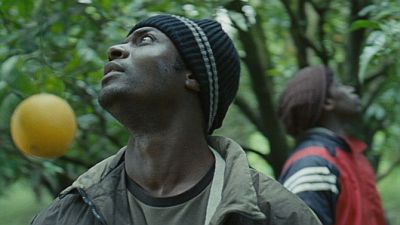I was seven years old when they kidnapped the chairman of Italy’s largest political party, former prime minister Aldo Moro. They took him on a Thursday morning in Rome, killing the five police officers of his detail to get to him. 55 days later, they returned his corpse in the trunk of a cheap car. I saw all of the graphic pictures, all of those bodies, on television and in the newspapers, over those 55 days and for the rest of the year.
It was a long decade of bombs, kidnappings and gunfights in the streets of our major cities. It started in my hometown in 1969, with a bomb planted in a bank not far from where my father worked, killing 17 people and wounding nearly one hundred. It ended in 1981 with a bomb planted at the Bologna train station which left 85 dead and over two hundred injured. Yet what terrified me the most as a child were the kidnappings and the shootings. I wasn’t a judge or a journalist or a politician, but in my nightmares I was a victim – not of the neo-fascist bombs designed to kill ordinary people as part of what came to be known as ‘the strategy of tension’, but of the Red Brigade commandos pursuing their deranged political targets.
Both kinds of terrorism operated on children as much as they did on adults. It formed us, growing up in this fear, and seeing fear on the faces of the grown-ups. It must have. However, I don’t recall ever being asked to draw those feelings.
The Italian secret service has a more chequered past than most, having been found out by magistrates to be directly implicated in several chapters of that decade of domestic terrorism. Reforms designed to bring it under closer prime ministerial control resulted in 2007 in its reorganisation into three different agencies plus a fourth controlled by the military: a host of new acronyms – AISI, AISE, DIS, RIS – for what looks suspiciously like the old, familiar set-up. On the public relations side, however, things have certainly changed: the organisation’s historic magazine, Gnosis, once hand-delivered to the selected few, is now sold in the Feltrinelli bookshops, a large chain linked to our largest left-wing publishing house. Even more curious is a recent competition called ‘Draw the intelligence services and help your school to win’ in which children as young as I was when Aldo Moro was kidnapped were asked to produce art on the subject of state security. One of the winning entries (above) depicts Islamic State as a black monster preparing to seize a child outside school, while masked and caped secret service agents hiding in a tree prepare, presumably, to save the day. Note the haloes on the agents’ heads, while the acronym ‘SS’ is surely coincidental.
Agents-as-angels are featured in this other entry, in which a group of winged spies holds a net with the words ‘Saviours of the citizens’ under a crowded tightrope. This time the threat that the rope is meant to symbolise is not specified, and is likely the sum of all available fears:
While this Inspector Gadget-like agent presides over a world threatened by ISIS, an exploding plane, and the attack on Charlie Hebdo:
This kind of exercise is self-fulfilling, so of course it would result in security services being portrayed as the guarantors of public safety. But it interests me that it would be tried at all, and that they found schools and educators willing to go along with it. The competition encouraged use of a ‘lecture’ on the history of intelligence services drafted by officials of the Ministry of the Interior, and winners got to be ‘agents for a day’ by visiting the organisation’s training facilities. However, what is most striking is the imagery that was produced: Islamic State as a dark monster, the white spies as angels; the country – which harbours freedom, security, rights and peace – being protected by the services’ ‘invisible hands’ against drugs, crime, terrorism, war, weapons and the cyber threat.
These are expressions not just of fear but of paranoia, and as such of decidedly dubious pedagogic value. Whose end does it serve to ask children to explore these feelings while competing for the privilege of parading in front of agency recruiters? What critical engagement could possibly exist under these conditions? Yet some of the exhibited works, if not critical, are at least somewhat acerbic. Like this one, showing the institution of the state’s secret as the cogs in a mysterious machine:
The overall effect, however, is of one of normalisation: both of fear as the defining feeling of the contemporary condition, and as secret policing as the existential line of defence. Thus the role of the agencies is not to quell that fear – for doing so would make them redundant – but reassure that not all bad things that could happen will happen.
When I was a boy, and the country was shaken by horrors brought about in large part by the state, we were spared such comforts. My fears remained unexpressed, bottled in that way that children have of speaking about some things but not others – perhaps out of an anxiety that putting them in words might make them more real. Or maybe I felt that my parents couldn’t help me through those feelings, and that they were dealing with fears of their own, too large and too distant from mine. Either way, it worked, on them and on me: our anxieties made us crave the security on offer, even as it came in exchange for never securing justice for most of those atrocities.
We live in dangerous times. Haven’t we always? And the answer, if there is one – the political answer, I mean – is to erect as many defences as we can against being manipulated in the name of the bad things that could happen.
Originally published at Overland






























